Anderson Ferry and other historic Cincinnati places you won't find in a tourism guide
For history buffs visiting Cincinnati, there are a number of must-see sites like Music Hall, Union Terminal and the Taft Museum of Art, or the many historic connections to Eden Park and Spring Grove Cemetery. Yet, those are all highlighted in any Cincinnati tourism guide.
Perhaps you’re interested in something different, some historic sites that don’t get much play in the guidebooks.
We have to exclude places that have been closed and derelict for years, like the King Records buildings in Evanston or the Crosley Building in Camp Washington. You can look from the curb, but you can’t go inside. (Maybe someday.)
So, here are five places you might not have thought of where you can still visit to soak up a bit of Cincinnati history.
More history places: 12 Black history sites everyone should visit in Greater Cincinnati
History of downtown: Downtown Cincinnati: What the past tells us
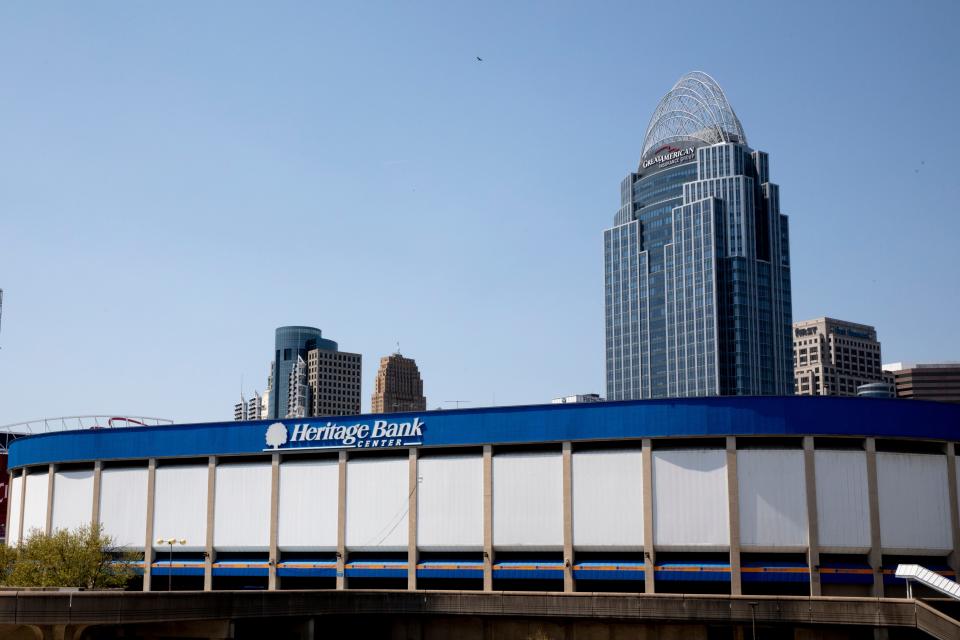
Heritage Bank Center
100 Broadway St., Downtown
The sports and music venue, the current home of Cincinnati Cyclones hockey, has been maligned as outdated, but there is no doubt that the Heritage Bank Center – previously known as Riverfront Coliseum, Firstar Center, The Crown and U.S. Bank Arena – is historic.
Built in 1975 as a neighbor to Riverfront Stadium, it’s been the home for University of Cincinnati Bearcats basketball (1975-1987), the Cincinnati Stingers hockey (1975-1980) and the Cyclones (since 1997). As a concert venue, it has hosted Paul McCartney, Frank Sinatra, Queen, Led Zeppelin and Taylor Swift, plus Elvis Presley in his second-to-last performance weeks before his death in 1977.
Famously, tragedy struck the night of Dec. 3, 1979, when the British rock band The Who performed at Riverfront Coliseum. Back then the seating was first come, first served. Thousands of fans crowded outside the locked doors pushed to get in. People popped out of their shoes from the press of bodies and 11 people were killed. The tragedy changed concert seating rules across the nation.
When you take in a Cyclones game or a concert, be sure to stop by the historic marker at the site that memorializes the 11 who died.
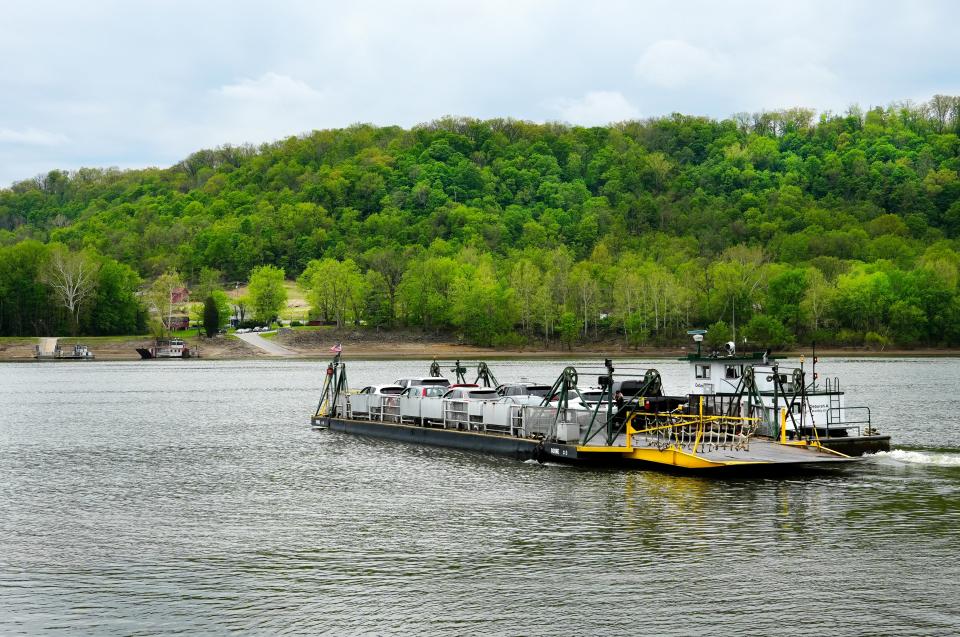
Anderson Ferry
One Anderson Ferry Rd., Cincinnati side
This is a site you can actually ride. The Anderson Ferry has been traveling back and forth across the Ohio River between Cincinnati, off U.S. 50 near Delhi Township, and Constance, Kentucky, for more than 200 years.
The ferry service dates back to March 3, 1817, when Boone County granted George W. Anderson a license to operate a ferry boat on the river. That was decades before the first bridge spanned the Ohio River in 1866. The first boat was a horse ferry, powered by horses walking on a treadmill that turned paddlewheels. Their first steam-powered ferry, Boone No. 1, launched in 1867. The Anderson Ferry was added to the National Register of Historic Places in 1982.
These days you can ride across as a foot passenger for 50 cents or with your car for $5, trucks from $5-$8.
The Kentucky side of the route is less than 3 miles from the Cincinnati/Northern Kentucky International Airport and 1 mile from I-275, making it a viable alternative for some commuters. Next time you’re picking up a passenger from the airport, consider this unique local transportation to add some fun.
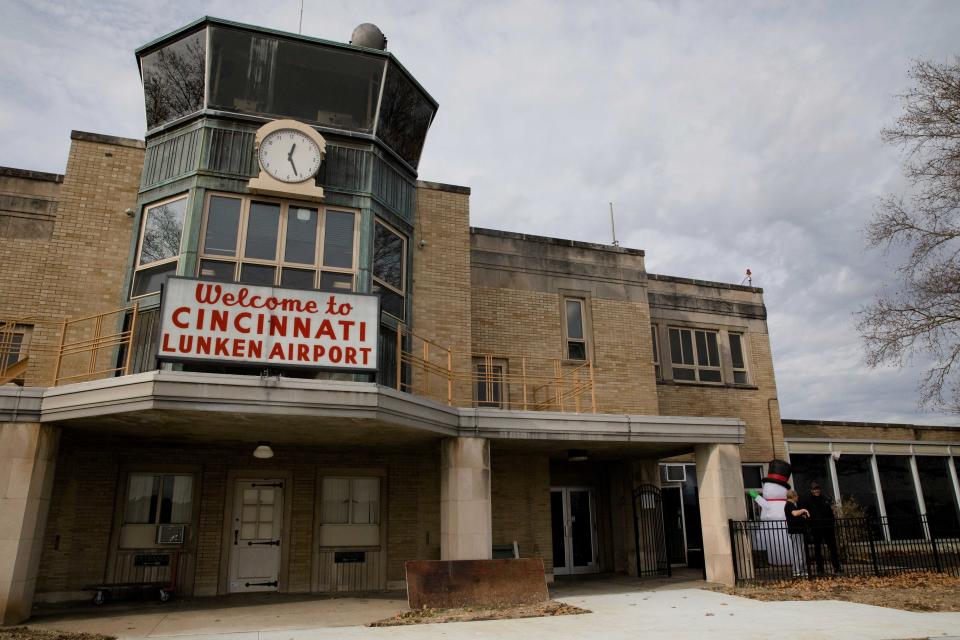
Lunken Airport
262 Wilmer Ave., East End
Cincinnati’s first permanent airport opened in 1925 in a section historically known as Turkey Bottoms near the site of Columbia (now Columbia-Tusculum), the area’s earliest settlement founded in November 1788. The land for the airfield was donated to the city of Cincinnati by Edmund F. Lunken.
Lunken Airport had an official three-day dedication Sept. 26-28, 1930, attended by 60,000 in just one of those days, including aviators Howard Hughes, Jimmy Doolittle and Freddie Lund, and Hollywood actress Jean Harlow. The Art Deco-style terminal was dedicated in 1938.
Since it opened, Lunken has welcomed many distinguished guests and celebrities. Charles Lindbergh landed the Spirit of St. Louis there in 1927 during a nationwide tour. In 1960, Sen. John F. Kennedy flew into Lunken, as did The Beatles before their Cincinnati Gardens show in 1964.
These days, Lunken Airport services mostly corporate, private and charter aircraft. The nearby Lunken Airport Bike Path offers a great place to watch planes take off and land.
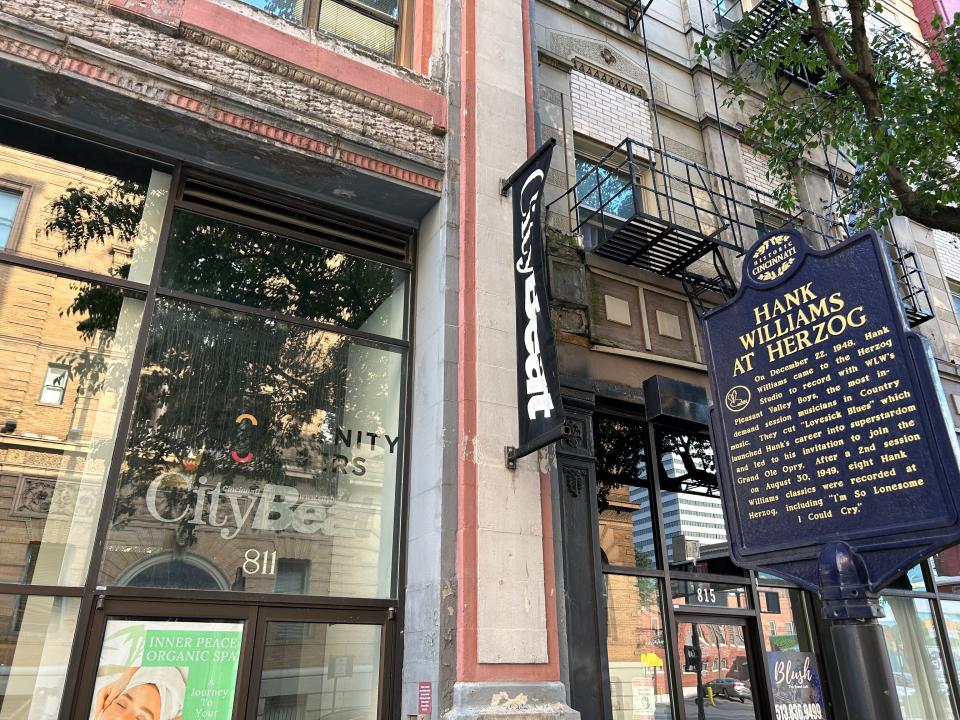
Herzog Studio building
811 Race St., Downtown
King Records may be more famous, but Herzog Studio left a mark in its brief history.
The E.T. Herzog Recording Co. was founded in 1945 by Earl “Bucky” Herzog, Charles Herzog and Henry G. Weiss on the second floor of an office building on Race Street. They hoped that top musicians in town to be on WLW-AM radio would stop in to record, and they did. King artists also recorded at Herzog before they got their own studio in 1947.
Hank Williams, the great country singer-songwriter, came up to Cincinnati twice to record with the Pleasant Valley Boys from the WLW show “Midwestern Hayride.” Williams recorded “Lovesick Blues,” the song that catapulted him to stardom, during a three-hour session at Herzog on Dec. 22, 1948. He returned to Herzog on Aug. 30, 1949, and recorded another classic, “I’m So Lonesome I Could Cry.”
Herzog Studio moved in 1955 and closed in 1958. A historical marker telling of the studio and Williams’ visits stands outside the building, which now houses the offices of CityBeat and, for a time, had an event space honoring Herzog’s legacy.
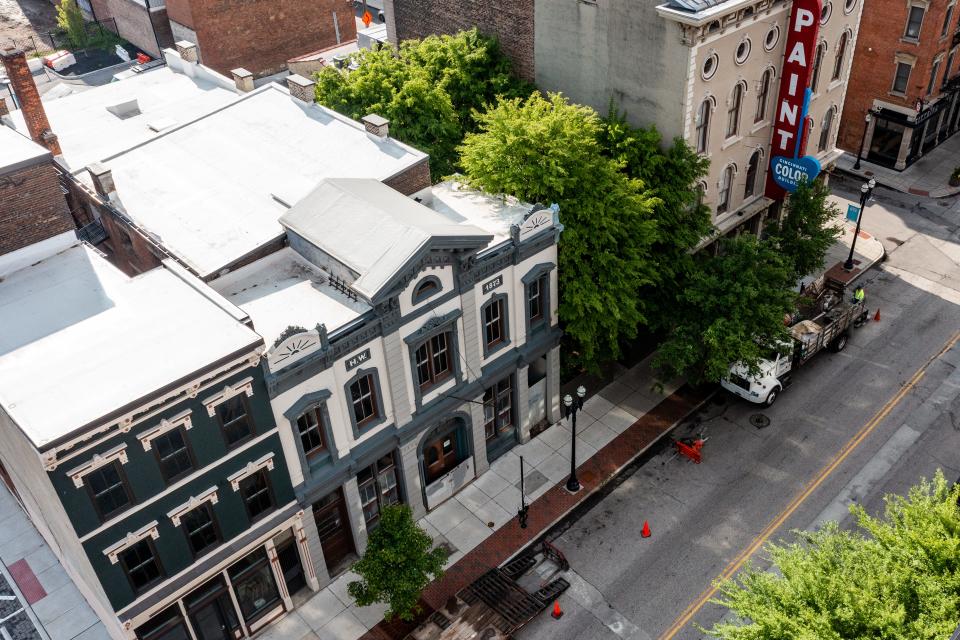
Wielert's Café building
1410 Vine St., Over-the-Rhine
Wielert’s Café was a historic beer garden in Over-the-Rhine, built in 1873 by Henry Wielert. A popular spot for the neighborhood’s German residents, the café also served as a sort of headquarters for George Barnsdale Cox, the infamous Boss Cox, who ran the Republican political machine that dominated local politics from the 1880s to 1911.
There were other historic connections. As the story goes, Garry Herrmann, one of Cox’s underlings and the president of the Cincinnati Reds, helped to unite the American and National leagues and end the baseball war in 1903 from a table in Wielert’s. And the Michael Brand Orchestra often performed at the café before the musicians formed the nucleus of the Cincinnati Symphony Orchestra in 1895.
The old building was vacant for decades, but was recently rehabilitated by Cincinnati Center City Development Corp. (3CDC). MadTree Brewing’s Alcove restaurant and bar opened in the space in 2021. Now you can experience the place for yourself while getting a taste of its history.
This article originally appeared on Cincinnati Enquirer: Heritage Bank Center and other overlooked historic Cincinnati sites

